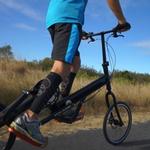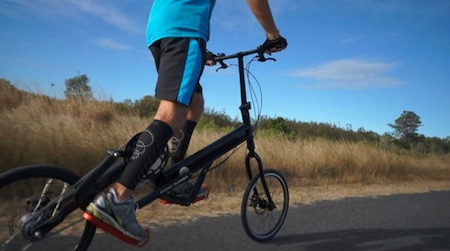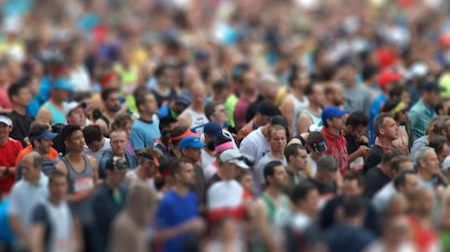
Aussie Invention Shows Better Way to Run
20 September 2014, 3:36PM
Jodie Herbert, Media & Communications

To see the Bionic Runner in action on YouTube. (click image)
Ask any runner why they run, and they will say it is the feeling, almost primal in its simplicity, intense, hypnotic, and addictive; a feeling of gliding effortlessly over the ground. Not the way you experience running? Well, imagine if you could, regardless of your fitness level, rediscover that pleasure that elite runners get out of running. Imagine having the freedom to just let loose and use your body the way it was intended.
We call it Bionic Running
Developed by fellow Australians and entrepreneurs Steve Cranitch and Dr Henry Thomas, the Bionic Runner is a reinvented bike for runners, where you literally stand up and run. The usual crank-set and pedals are replaced with a non-impact, closed kinetic chain that guides your feet along the footpath of a trained runner, removing the risk of awkward foot strikes, strains from over- extension, and impact fatigue.
The Bionic Runner is the first training device with the natural 60:40 swing vs stance phase timing that matches the intensity and specificity of running exercise. With it, you can train hard from day one, only limited by your fitness level, not the ability of your legs to withstand the relentless pounding of your feet on the pavement. The feeling of Bionic Running is quite unexpected. You’ll share that intensity runners experience and feel rewarded by the body’s natural endorphins, without the associated pain from the impact fatigue.

Running is a popular activity. More than 1 million Australians run 3 or more times a week. Running is also an essential component of many sporting codes. For example, Soccer players spend 60% of their match time sprinting 10m distances. Footballers during training run 5 to 10km per day, 3-4 times per week. Ultra-marathonists run up to 40km every day to prepare for a race and Triathletes run up to 15km every day. No matter what the sport, running is most likely key core element in training, used to build fitness and endurance and is the foundation of many specific skills and techniques.
However, until now, as we run to train, we put our bodies on the line. With each foot strike we are exerting 2.5 times our body weight on impact. Eventually when something gives, we get injured. In fact, a recent Harvard study1 reports that 75% of runners sustain a serious training injury each year.


The Bionic Runner rewrites the book on running training. For the first time, athletes can separate their high injury risk training activities used to improve running fitness from the easy running they do to develop their running technique and improve economy. Think of the Bionic Runner as the ideal way to pre-train your body for increased kilometres without having to actually run them. So when you do run, you can focus on improving the efficiency of your running gate. You’ll build strength and endurance so you arrive at events fast, fit and uninjured.
The Bionic Runner is set to challenge the way we think about running training and the way we prepares for competitive sport. The product will be launched worldwide on Oct 2nd, and we invite you to view the potential of this amazing Australian invention at Run4TV.
Run4 creates amazing bionic machines that train faster runners. Unlike cross trainers, the Bionic Runner pre-trains your body for increased road miles before you actually run them. You’ll build running strength and endurance and avoid overtraining injuries. Combine it with your running program for peak performance.
______________
1 Foot strike and injury rates in endurance runners: a retrospective study.
Daoud AI, Geissler GJ, Wang F, Saretsky J, Daoud YA, Lieberman DE
Med Sci Sports Exerc. 2012 Jul;44(7):1325-34. doi: 10.1249/MSS.0b013e3182465115. http://www.ncbi.nlm.nih.gov/pubmed/22217561
